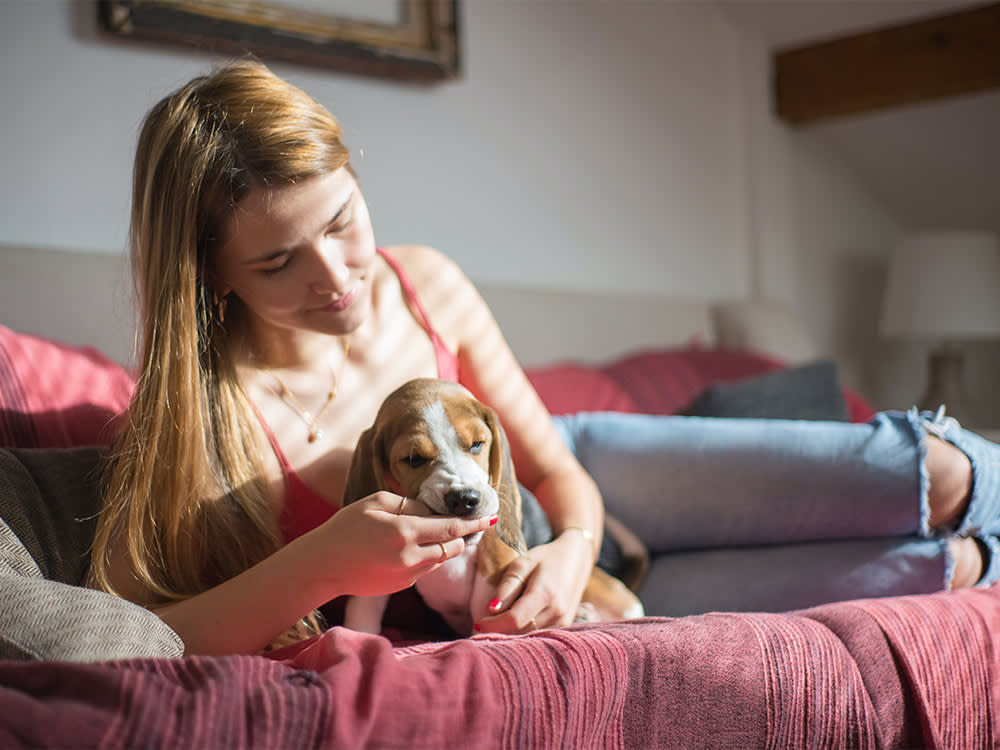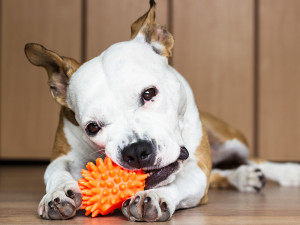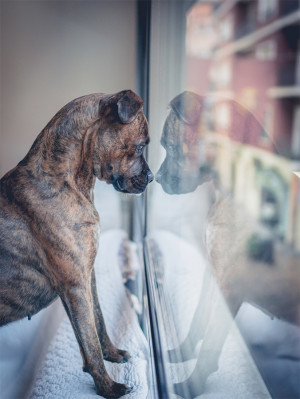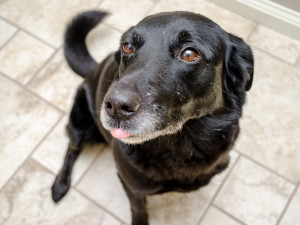Why Does My Dog Chew On Blankets?
A (seemingly) unstoppable nibbling obsession with all the blankets

Share Article
I am obsessed with blankets. Turns out, so is my dog Leo. My blanket obsession began with a passion for textile design, which developed into a habit of buying any blanket, throw or quilt that caught my eye. Leo’s blanket habit is related to mine: whenever I bring home a gorgeous new blanket, he has to chew a gigantic hole right in the middle as soon as he is left alone with it for more than 20 seconds. While I had trouble with Leo, I’ve also learnt a thing or two along the way.
Dealing with compulsive blanket chewing
Sometimes, I think fate must have ironically brought Leo and me together or that maybe Leo is saving me from the fate of being crushed under an avalanche of blankets when I open the linen cupboard. With Leo’s blanket munching, I recognised there were two issues that needed to be addressed. First, Leo could not be left alone with blankets until he learnt chewing on them was inappropriate. Secondly, he needed a positive outlet for his chewing, such as a chew toy.

littleKin™ is Kinship’s home just for puppy and kitten parents. Bop over to check out expert advice, new pet tools, and special deals—all curated for your newest family member.
opens in a new tabKeeping Leo away from blankets worked for about a week. His tenacity for finding unattended blankets was borderline inspiring. I’d leave the bedroom door open for a minute while I went to grab clothes from the dryer: gigantic hole in the blanket. I’d take a nap on the sofa: down feathers everywhere when I woke up.
Since keeping him away from blankets wasn’t going to happen, I tried taste deterrents like bitter spray misted onto the blankets. Apparently, the only one affected by this was me. Many a nap was rudely ended by a bitter taste. After falling asleep in a blanket cocoon on the sofa (exhausted from watching back-to-back-to-back episodes of Married at First Sight), my open mouth would inevitably make contact with the surface of the blanket. It was heinously gross. Meanwhile, Leo would power through the nasty flavour. For my sake, I gave up on the bitter spray.
My plan to redirect Leo’s affection from blankets to toys has been even less successful. Even after taking Leo to dog training, specifically to pique his interest in toys, he drifts after more than 20 seconds unless it is something he can eat (like a bully chew or a Kong toy). I see a future with a morbidly obese dog curled happily on elegant, intact quilts.
The reality is Leo and I both have issues that need to be dealt with (though I’d like to think that I can curb my blanket-purchasing habit as soon as I can curb Leo’s blanket-eating habit). What next? Do I give Leo one blanket and designate it as his? Do I concede that maybe I won’t have nice blankets ever? Why does he have an obsession with blankets?
Why do dogs chew on blankets?
Dogs are instinctive chewers that explore the world with their mouths so it is better to give them their own chew toys, blankets and ropes rather than sacrifice your own blankets, bedding and furniture. “Chewing can help relieve stress and anxiety, keep their teeth clean and keep their minds stimulated,” says Dr Lori Teller, a clinical associate professor at the Texas A&M College of Veterinary Medicine. “Puppies also chew to relieve the pain and irritation of teething.”
Here are a few reasons why dogs chew:
boredom buster
stress relief
puppy teething
it feels good
mental stimulation
How to stop your dog from chewing blankets
Here are some tips that might work to stop your dog from chewing holes in your blankets. When in doubt, if you think the problem might be a medical issue, check in with your vet to make sure everything is OK, especially if the chewing turns into eating.
Exercise, exercise, exercise
Many dogs are prone to chewing or more destructive behaviours because they are bored. Exercise helps! In my case, Leo was already getting plenty of exercise, but it is a crucial starting point for anyone experiencing this problem.
Give them their own blanket
Chewing is a completely normal behaviour in dogs, so it can be challenging to train against their nature. One option is to provide the dog with a blanket that is theirs and OK to chew (assuming their interest isn’t in eating the blanket). Sure, the blanket will turn into a shredded mess, but it’s their shredded mess.
Just a phase
With some dogs, blanket chewing is an adolescent phaseopens in a new tab while they are teething; for others, it simply grows into a comforting tool. If your dog is young and still teething, you might find soft toys or stuffies are something that works.
Kongs
They work, even if it is just for a brief blanket chewing break. No better tool in keeping dogs busy than a stuffed kongopens in a new tab. “Remove any toy that has reached the size where it can become a choking hazard or cause an intestinal obstruction,” says Dr Teller. “If your dog chews off large pieces of the toy and swallows them, then that toy should also be taken away.”

Kate VandenBerghe
Kate VandenBerghe is the Creative Director and co-founder of Saint Friend in Portland, Oregon.
Related articles
- opens in a new tab
“How Do I Get My Puppy to Stop Biting My Ankles?”
Dog trainer Robert Haussmann’s tips for dealing with an attention-seeking puppy
![Dog Looking Out The Window.]() opens in a new tab
opens in a new tabWhat, Exactly, Can Dogs See?
Those soulful eyes mean everything to you – learn all about them
![Black dog sitting on tiled floor]() opens in a new tab
opens in a new tabWhat’s Better Than a Tail Wag? A Circle Wag
Also called the ‘propeller wag’ or ‘helicopter tail’, this behaviour is a surefire way to tell that a dog is happy
![Three dogs on leashes meeting and sniffing each other on a walk on the summer grass with owners]()
How Do I Get My Shy Dog To Socialise?
Dog trainer Robert Haussmann’s tips for getting a shy pup to go from wallflower to social butterfly




